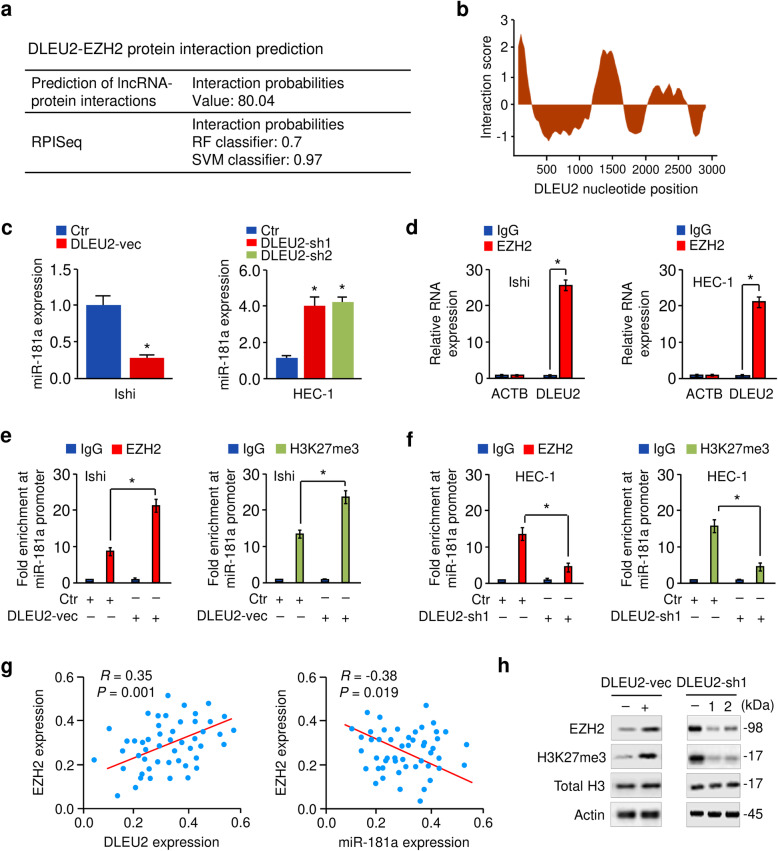Fig. 7.
DLEU2 binds to EZH2 protein, resulting in decreased miR-181a levels. a Bioinformatics software (Prediction of lncRNA-protein interactions and RPISeq) predicted that there was a strong interaction propensity between DLEU2 and EZH2. In the prediction of the lncRNA-protein interactions database, interaction probabilities > 50 indicated that a strong interaction probability between the corresponding RNA and protein. In RPISeq, predictions with probabilities > 0.5 indicated that the corresponding protein and RNA are likely to interact. b Prediction of interaction propensity between DLEU2 and EZH2 (catRAPID). A positive interaction score predicts an increased propensity for binding. c qRT-PCR analysis of miR-181a expression following overexpression or knockdown of DLEU2. d RIP assays show that DLEU2 bound to EZH2 in EC cells. ACTB mRNA was used as the negative control. e, f The effects of either DLEU2 overexpression (e) or DLEU2 knockdown (f) on the binding of EZH2 and H3K27me3 to the miR-181a promoter were examined using ChIP-qPCR assays. g The correlation between DLEU2, EZH2, and miR-181a expression was detected in EC patients. Ishi: Ishikawa; vec: vector; sh: shRNA. h Western blotting analysis of the indicated proteins in EC cells upon overexpression or knockdown of DLEU2. *P < 0.05

